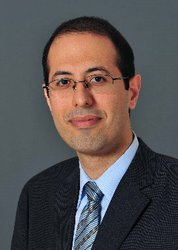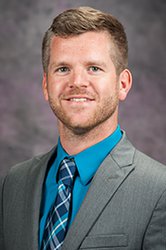Smart Morphing Façades for Adaptive Buildings under Wind Events
Published on December 10, 2018
A Collaborative project Led by Iowa State University and Kansas State University researchers supported by NHERI Experimental Facility (EF), FIU Wall of Wind (WOW).
A multi-disciplinary team of researchers from Iowa State University (ISU) and Kansas State University (KSU) received funding from the National Science Foundation (NSF) to develop a solution to decrease the losses associated with buildings under extreme wind events.
Alice Alipour, assistant professor of the ISUs Department of Civil, Construction, and Environmental Engineering (CCEE), is collaborating with her colleagues Behrouz Shafei of CCEE, Partha Sarkar of Aerospace Engineering at ISU, and Jared Hobeck of Mechanical Engineering at KSU, to reinvent building façade systems as multifunctional, active structural units. The work will transform façades from a passive element serving its traditional architectural and functional role to an alive engineered system that can protect a building against extreme wind events, decrease structural costs, and eventually contribute to a sustainable solution for energy saving.
Departing from traditional thinking
This project aims to integrate and advance several nascent ideas: adaptive façades (used for energy saving) and morphing structures (similar to those in newly implemented morphing wings). This effort will lead to a novel active-control system that aerodynamically transforms and streamlines the envelope of a building in response to variations in the direction and intensity of wind.
The project is unique as it will bring experts from multiple disciplines to provide a solution for a long-standing problem. Dr. Alipours expertise spans structural dynamics, stochastic mechanics and performance-based design of structural systems. She is also a recent NSF CAREER Award recipient. Dr. Shafei brings in the expertise needed for the design and analysis of building prototypes under extreme events and the development of computational modeling and simulation tools. Dr. Sarkar is the founder and director of the ISUs Wind Simulation and Testing Laboratory (WiST). His research focuses on the impact of wind loads on the built environment. Dr. Hobeck has expertise in developing advanced structural systems capable of active or passive vibration suppression. Such systems monitor their own structural integrity, remember extreme or traumatic events, and provide damage detection warnings.
NHERI experimental facility plays instrumental role
This project will use the NSF-sponsored NHERI WOW EF. This facility enables aerodynamic and aeroelastic testing at large scales in atmospheric boundary layer flows at high Reynolds numbers. In this project, the researchers will explore the integrated performance of buildings equipped with advanced control system and smart morphing façades.











